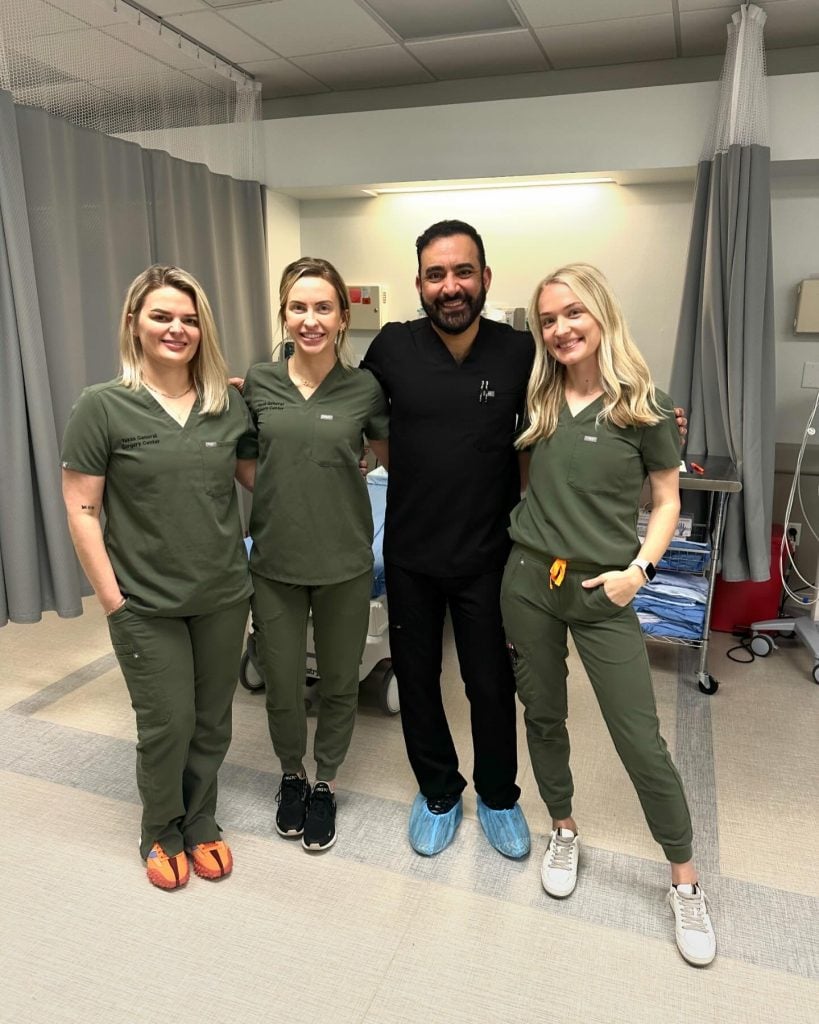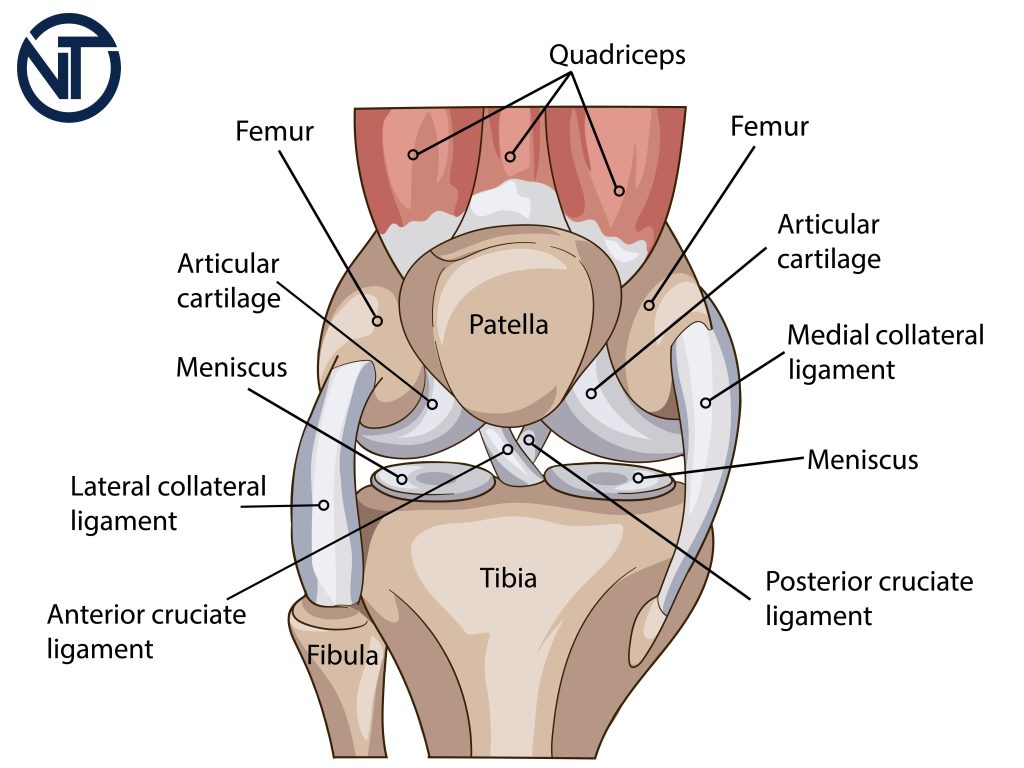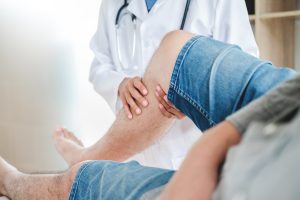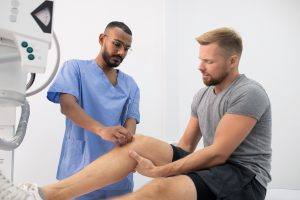Knee Pain Treatment
Conquer Knee Pain: Your Ultimate Knee Care Specialist
We are committed to provide cutting edge non-surgical and minimally invasive management of Knee Pain syndromes. Our goal is to decrease your knee pain as well as to increase your daily activities and enhance the quality of your life. We will provide a comprehensive individualized evaluation, a diagnosis and treatment plan in which you, as the patient, are an active participant. Please take a moment to speak with our team of knee pain doctors. You’ll be glad you did. Our knee pain doctors service Plano, Mckinney, Allen and Frisco Texas.
Quick Links
What is a Knee Pain Doctor or Knee Pain Specialist?
A knee pain doctor or specialist is a medical professional who focuses on diagnosing and treating knee injuries and conditions. A knee pain doctor is often an orthopedic surgeon, meaning they have completed medical school and additional specialized training in musculoskeletal disorders, with an emphasis on the knees. The expertise of a knee pain doctor ensures effective treatment for a wide range of knee-related issues.
Knee pain doctors encounter various common knee injuries, including:
- ACL (Anterior Cruciate Ligament) Injuries: Frequently occurring in sports, these involve damage to a crucial ligament in the knee, often treated by a knee pain doctor.
- Meniscus Tears: The meniscus acts as a shock absorber in the knee, and tears in this area can cause significant pain and mobility issues, commonly addressed by knee pain doctors.
- Fractures: Injuries resulting in broken bones around the knee require the expertise of a knee pain doctor.
- Dislocations: When the bones of the knee are out of place, a knee pain doctor can provide proper treatment.
- Arthritis: A degenerative condition causing pain and stiffness in the knee joint, often managed by knee pain doctors through non-surgical interventions.
A knee pain doctor or specialist’s approach to treatment is not limited to surgery. A knee pain doctor frequently utilizes non-invasive treatments such as physical therapy, medication, and lifestyle modifications to improve knee function and reduce pain. For accurate diagnosis, a knee pain doctor uses advanced imaging technologies like MRI scans to gain detailed insights into the internal structures of the knee.
Knee pain doctors are also crucial in sports medicine, aiding athletes in recovering from knee injuries and enhancing their performance. A knee pain doctor caters to diverse patients, from young athletes to older individuals managing chronic knee pain, ensuring personalized care for all. The primary goal of a knee pain doctor is to maintain and restore optimal knee health and functionality for their patients.
Start Living Pain Free Today.

- Knee Pain
- Back Pain
- Shoulder Pain
- Foot & Ankle Pain
- Headache
- Neck Pain
- Osteoarthritis
- Sciatica
- Arthritis
- Herniated Disc
- Migraine
- Tennis Elbow
Knee Pain Quiz
Knee Anatomy and Conditions
A knee pain therapy doctor or specialist is a medical professional who specializes in treating knee injuries and conditions. They are often orthopedic surgeons, which means they have completed medical school and additional training specifically in the area of musculoskeletal disorders, including the knees.
Causes of Knee pain can be from a variety of sources, including acute injuries like sprains, tears, and fractures, as well as chronic conditions such as arthritis, particularly osteoarthritis. Overuse, muscle imbalances, poor posture, and inadequate stretching before physical activity can also lead to knee discomfort. Additionally, underlying medical conditions like infections or diseases affecting the joints, such as rheumatoid arthritis or gout, can cause knee pain. Understanding these causes is crucial for effective diagnosis and treatment.
Human Knee Anatomy
A knee pain therapy doctor or specialist’s approach to treating knee issues goes beyond surgery. They often utilize non-invasive treatments like physical therapy, medication, and lifestyle recommendations to address pain and improve mobility. For diagnosis, a knee pain doctor employs advanced imaging technologies such as MRI scans, which provide detailed insights into the knee’s internal structures.
Knee pain therapy doctors play a vital role in sports medicine, helping athletes recover from knee injuries and optimizing their performance. They work with a diverse range of patients, from young athletes to older adults managing chronic knee pain, ensuring tailored care for every individual. The expertise of a knee pain therapy doctor is key to maintaining optimal knee health and functionality for all.
The knee is a complex joint composed of bones, ligaments, tendons, cartilage, and muscles. Understanding the intricate anatomy of the knee allows a knee pain therapy doctor to diagnose and treat a variety of conditions affecting each component. Here’s an outline of knee anatomy and potential conditions that can impact each part:

- Femur (Thigh Bone): The upper part of the knee joint. Conditions: Fractures, osteoarthritis.
- Tibia (Shin Bone): The lower part of the knee joint. Conditions: Fractures, shin splints, osteoarthritis.
- Patella (Kneecap): A small bone in front of the knee. Conditions: Fractures, dislocation, patellofemoral pain syndrome (runner’s knee).
2. Ligaments
- Anterior Cruciate Ligament (ACL): Connects the femur to the tibia at the front. Conditions: ACL tears or sprains, usually from sports injuries.
- Posterior Cruciate Ligament (PCL): Connects the femur to the tibia at the back. Conditions: PCL tears or sprains.
- Medial and Lateral Collateral Ligaments (MCL and LCL): Run along the sides of the knee. Conditions: MCL and LCL sprains or tears.
3. Cartilage
- Menisci (Medial and Lateral): Two C-shaped pieces of cartilage acting as shock absorbers between the femur and tibia. Conditions: Meniscus tears, degeneration.
- Articular Cartilage: Covers the ends of the bones. Conditions: Wear and tear leading to osteoarthritis.
4. Tendons
- Quadriceps Tendon: Connects the quadriceps muscle to the patella. Conditions: Tendonitis, tears.
- Patellar Tendon: Connects the patella to the tibia. Conditions: Tendonitis (jumper’s knee), tears.
5. Muscles
- Quadriceps: A group of muscles at the front of the thigh. Conditions: Strains, muscle weakness.
- Hamstrings: Located at the back of the thigh. Conditions: Strains, tightness.
6. Bursae
- Small fluid-filled sacs that cushion the knee joint. Conditions: Bursitis (inflammation).
Each part of the knee plays a critical role in its function, and damage or disease in any one of these parts can lead to pain, stiffness, and mobility issues. Proper diagnosis and treatment are essential for maintaining knee health and function.
With Dr. Ghalambor’s expertise as a leading knee pain therapy Doctor specializing in interventional knee pain management, we are here to guide you every step of the way, making the process as stress-free as possible. Ready to start your journey to knee pain relief? Our expert knee pain therapy doctor is now available at five convenient locations in Allen Tx, Fort Worth Tx, Coppell Tx, and Garland Tx. Don’t let knee pain hold you back—contact us today to meet with a trusted knee pain therapy doctor and take the first step toward a healthier, pain-free life.
Knee pain can make even the simplest tasks feel impossible. Whether it’s sharp, aching, or stiff, understanding the cause is key to finding relief. 🦵💥
Swipe through to discover the top 4 reasons behind knee pain—bursitis, arthritis, injuries, and overuse—and take the first step toward feeling better.
Don’t let knee pain control your life. We’re here to help with solutions that work for you!
📞 972-872-8408
🌐 nortexspineandjoint.com
#KneePain #KneePainRelief #JointPain #ArthritisRelief #InjuryRecovery #PainManagement #HealthyJoints #JointCare #SportsInjury #Rehabilitation #MoveBetter #ChronicPainRelief #OrthopedicCare #NortexSpineAndJoint #Bursitis #Osteoarthritis #HealthyLifestyle #PainFreeLiving

Knee pain can make even the simplest tasks feel impossible. Whether it’s sharp, aching, or stiff, understanding the cause is key to finding relief. 🦵💥
Swipe through to discover the top 4 reasons behind knee pain—bursitis, arthritis, injuries, and overuse—and take the first step toward feeling better.
Don’t let knee pain control your life. We’re here to help with solutions that work for you!
📞 972-872-8408
🌐 nortexspineandjoint.com
#KneePain #KneePainRelief #JointPain #ArthritisRelief #InjuryRecovery #PainManagement #HealthyJoints #JointCare #SportsInjury #Rehabilitation #MoveBetter #ChronicPainRelief #OrthopedicCare #NortexSpineAndJoint #Bursitis #Osteoarthritis #HealthyLifestyle #PainFreeLiving
...
🏃♂️ Struggling with knee pain? You’re not alone. At Nortex Spine and Joint, our PRP therapy harnesses your body’s own healing power to repair damaged tissue in the knees, helping you regain your mobility.
It’s time to lace up your running shoes and embrace an active lifestyle again! Contact us today at
📞 214-717-6676 or visit
🌐 nortexspineandjoint.com for more information.
#KneePain #PRPTherapy #NortexSpineAndJoint #PainRelief #ActiveLifestyle #NaturalHealing #PainFreeLiving #SportsMedicine #RegenerativeHealth #AllenTX #garlandtx

🏃♂️ Struggling with knee pain? You’re not alone. At Nortex Spine and Joint, our PRP therapy harnesses your body’s own healing power to repair damaged tissue in the knees, helping you regain your mobility.
It’s time to lace up your running shoes and embrace an active lifestyle again! Contact us today at
📞 214-717-6676 or visit
🌐 nortexspineandjoint.com for more information.
#KneePain #PRPTherapy #NortexSpineAndJoint #PainRelief #ActiveLifestyle #NaturalHealing #PainFreeLiving #SportsMedicine #RegenerativeHealth #AllenTX #garlandtx
...
After coming to us for back pain relief, this patient found even more than he expected! Not only did we help his back, but he discovered that we could also treat his knee pain with PRP injections. Now, thanks to the treatment, he’s enjoying life pain-free and able to get back to the activities he loves.
At Nortex Spine and Joint Institute, we believe in finding the right solution for every patient, whether it’s back, knee, or joint pain. If you’re ready to move better and feel better, we’re here for you!
📞 214-613-1871
💻 www.nortexspineandjoint.com
#PRPTherapy #PainReliefJourney #KneePain #BackPain #JointHealth #AllenTX #PainFreeLiving #HealthAndWellness #GetBackToLiving

After coming to us for back pain relief, this patient found even more than he expected! Not only did we help his back, but he discovered that we could also treat his knee pain with PRP injections. Now, thanks to the treatment, he’s enjoying life pain-free and able to get back to the activities he loves.
At Nortex Spine and Joint Institute, we believe in finding the right solution for every patient, whether it’s back, knee, or joint pain. If you’re ready to move better and feel better, we’re here for you!
📞 214-613-1871
💻 www.nortexspineandjoint.com
#PRPTherapy #PainReliefJourney #KneePain #BackPain #JointHealth #AllenTX #PainFreeLiving #HealthAndWellness #GetBackToLiving
...
✨ Ready to ditch the cortisone shots and surgeries? Explore innovative knee pain treatments with us! From PRP to other cutting-edge regenerative treatments, we`re paving the way for a non-invasive approach to healing. Let`s get you back on your feet, pain-free! 💥
#NonSurgicalRelief #InnovativeMedicine #prp #prptreatment #PRPTherapy
#kneepain #kneepainsolutions #kneepainrelief #kneetreatment

✨ Ready to ditch the cortisone shots and surgeries? Explore innovative knee pain treatments with us! From PRP to other cutting-edge regenerative treatments, we`re paving the way for a non-invasive approach to healing. Let`s get you back on your feet, pain-free! 💥
#NonSurgicalRelief #InnovativeMedicine #prp #prptreatment #PRPTherapy
#kneepain #kneepainsolutions #kneepainrelief #kneetreatment
...
Most patients with combined treatments of injections, physical therapy,stem cell therapy, and shockwave treatments can improve up to 80%.
If you are suffering from chronic knee pain call and make an appointment today. 972-872-8408

Most patients with combined treatments of injections, physical therapy,stem cell therapy, and shockwave treatments can improve up to 80%.
If you are suffering from chronic knee pain call and make an appointment today. 972-872-8408
...
Knee Pain Articles

Causes of Knee Pain
When to Visit a Doctor for Knee Pain: Knowing the Right Time It’s important to know when to seek professional help for knee pain Doctor. If your knee pain is

How to Find the Best Knee Doctor Near You
Finding the right knee specialist in cities like Allen, McKinney, Frisco, and Dallas can significantly improve your journey toward knee health. Let’s dive deeper into the process with expert insights

Top 10 Knee Treatments Offered by Expert Knee Doctors
Welcome to NorTex Spine & Joint Institute’s insightful blog, where we delve into the intricate world of knee pain relief. Situated in the heart of Allen, McKinney, Frisco, and Dallas,



